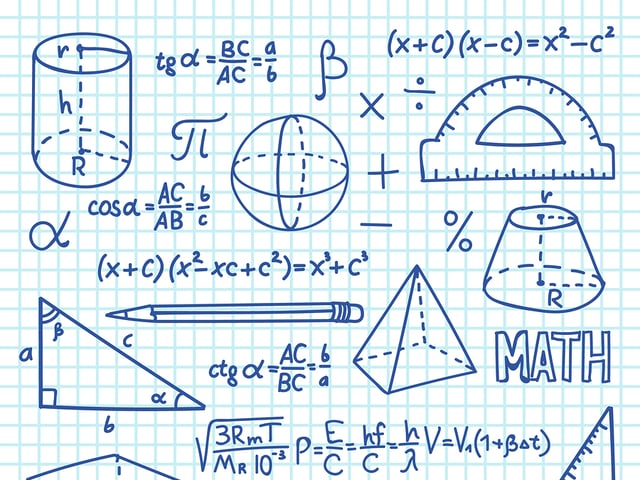
Math on the HISET®: What You Need to Know
The HISET® test assesses whether you have the knowledge equivalent to a high school graduate. Here are some basic facts about the math portion of the test:
-
The math on this test corresponds to the math in a typical high school curriculum.
-
The problems on the test do not require a calculator, although you may request one at the test center. You are not allowed to bring your own calculator.
-
It is best to be proficient at basic mathematical operations without needing a calculator.
-
While a formula sheet is provided, the distance-rate relationship, quadratic formula, and Pythagorean Theorem are not provided but are needed on the test.
-
The word problems on the test emphasize applying concepts to real-world situations.
The HISET® test covers concepts from four broad content areas. Note the emphasis on algebraic concepts:
- Numbers and operations on numbers (19%)
- Measurement/geometry (18%)
- Data analysis/probability/statistics (18%)
- Algebraic concepts (45%)
In addition, the problems on the test require you to apply these process skills:
- Understand mathematical concepts and procedures
- Analyze and interpret Information
- Synthesize data and solve problems
Let’s outline the content in each area:
Numbers and Operations
- Properties of numbers: natural, whole, rational and irrational numbers
- Order of operations
- Properties of exponents, including radicals
- Scientific notation
- Ratio and proportion
- Percents
- Estimation and rounding
- Problems involving rates
Measurement and Geometry
- Types and properties of angles
- Right triangles and the Pythagorean Theorem
- Types and properties of polygons
- Symmetry and congruence
- Properties of circles
- Transformations
- Volume and surface area of 3D solids
- Problems involving perimeter, area, and volume
Data Analysis, Probability, and Statistics
- Graphs and tables
- Correlation and linear models
- Probability of single, compound, and independent events
- Measures of central tendency
- Normal distribution and standard deviation
Algebraic Concepts
- Operations with expressions, FOIL
- Factoring expressions
- Equations and inequalities
- Quadratic equations
- Systems of equations
- Applications of equations in problem-solving
- Graphical representations of lines, parabolas, and inequalities
- Functions: domain and range
- Sequences: arithmetic and geometric
Keep Reading

HiSET Test Blog
Must-Know Science Formulas for the HiSET Test
Achieving proficiency in science can be challenging. If you’re studying…

HiSET Test Blog
Is the HiSET Easier Than the GED?
Over 2 million 16-24-year-olds in the U.S. lack a high school education…

HiSET Test Blog
The HiSET vs the GED: What’s the Difference?
There are several exams that can be taken as an alternative to receivin…